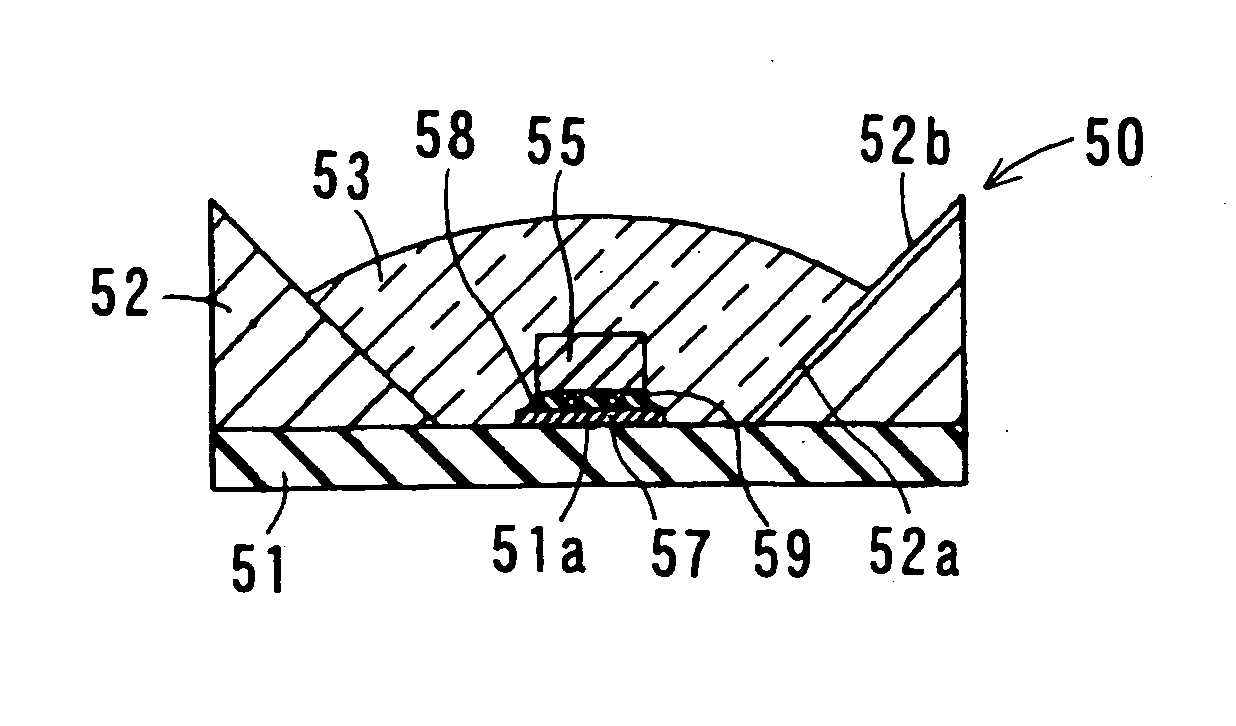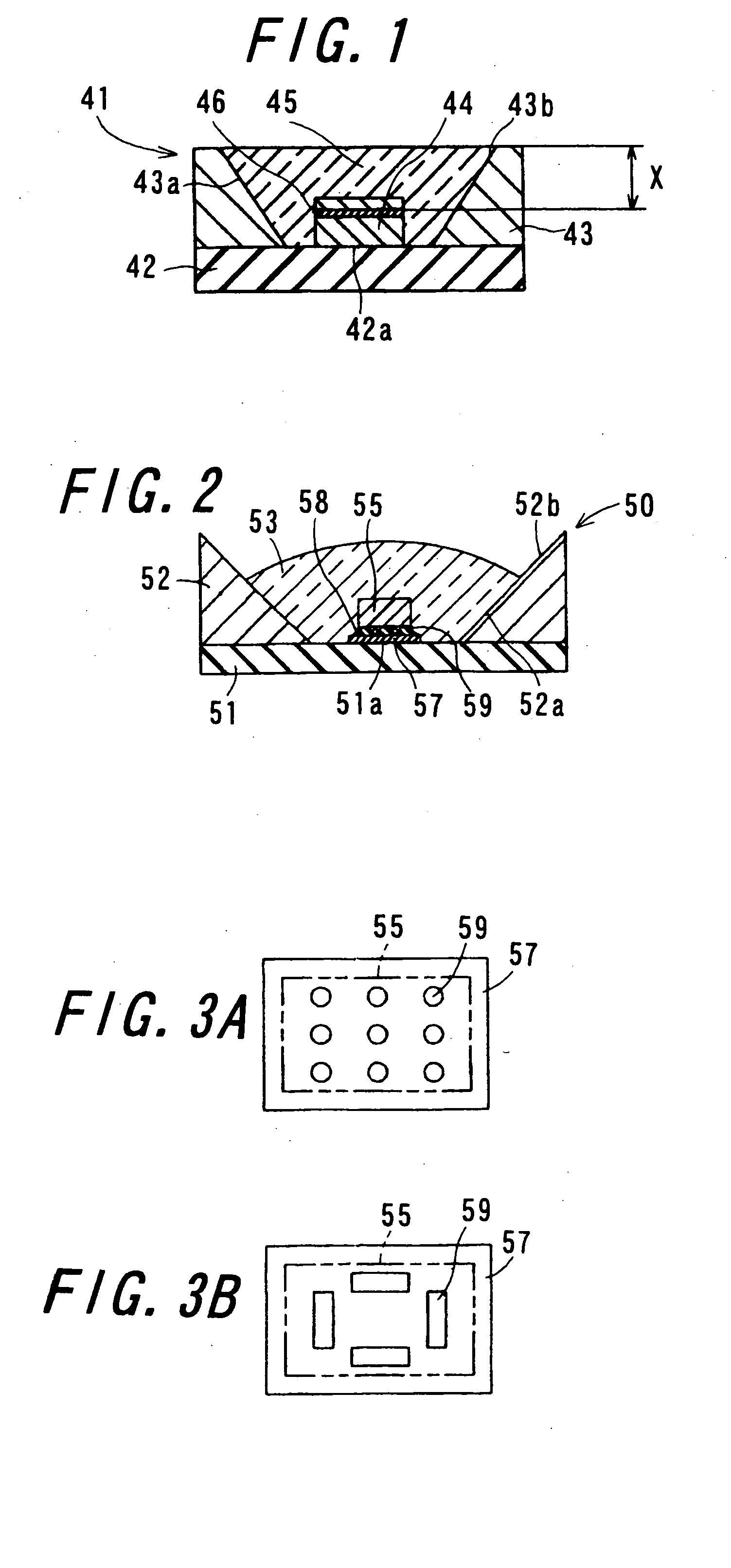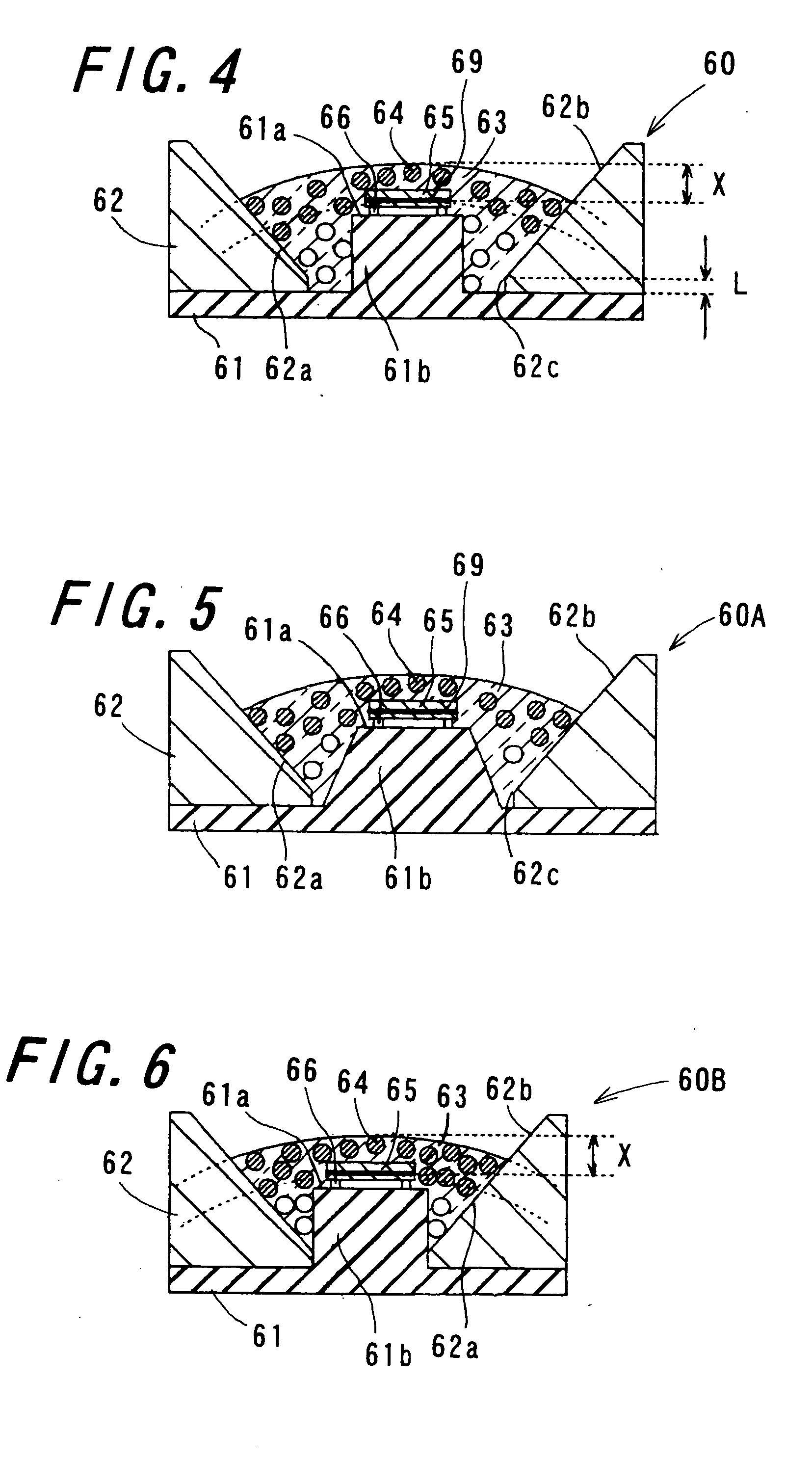Package for housing light-emitting element, light-emitting apparatus and illumination apparatus
a technology of light-emitting elements and packaging, which is applied in the field of packaging, can solve the problems of poor wavelength conversion efficiency, deterioration of optical power, brightness, color rendering, and inability to readily excite fluorescent materials present in specular reflection directions, and achieve the effect of effectively suppressing light leakage, increasing radiation light intensity, and improving heat dissipation properties
- Summary
- Abstract
- Description
- Claims
- Application Information
AI Technical Summary
Benefits of technology
Problems solved by technology
Method used
Image
Examples
example 1
[0288] Hereinafter, a description will be given as to an implemented example of the light-emitting apparatus 41 according to the first embodiment of the invention.
[0289] At first, as the base body 42, an alumina ceramic substrate made of crystalline particles having different diameters was prepared. Then, around the mounting portion 42a for mounting thereon the light-emitting element 44 was formed a wiring conductor for electrically connecting the light-emitting element 44 to the external electric circuit board through an internal wiring line formed within the base body 42. Note that the wiring conductor formed on the upper surface of the base body 42 was shaped into a 0.1 mm-diameter circular pad with use of a metallized layer made of Mo—Mn powder. The wiring conductor has its surface coated with a 3 μm-thick Ni plating layer and a 2 μm thick Au plating layer successively. Moreover, the internal wiring line formed within the base body 42 was constituted by an electrical connection...
example 2
[0295] Next, samples of the light-emitting apparatus 41 were fabricated. The samples, of which each has the same structure as that of the above-stated implemented example, are identical in structure with one another, but differ from one another in an average particle diameter of the ceramic crystal grains as observed after the sintering of the base body 42:1 (μm); 5 (μm); and 10 (μm). Then, the total light beams (optical power) with respect to the load current for the light-emitting element 44 were measured. Note that the light-emitting apparatuses 41 were individually mounted in heat sinks that are identical in cooling capability with one another. The optical power was measured by means of integrating sphere. The results are listed in FIG. 27.
[0296] As will be understood from FIG. 27, given the load current for the light-emitting element 44 of 20 (mA), i.e. rated current and rated voltage of 3.4 (V), then the light-emitting apparatus 41 having the average particle diameter of the ...
example 3
[0300] Hereinafter, an implemented example of the light-emitting apparatus 60c according to the sixth embodiment of the invention will be described with reference to FIG. 7.
[0301] At first, as the base body 61, an alumina ceramic substrate was prepared. Note that the base body 61 has the convexity 61b with a mounting portion 61a formed integrally therewith. The upper surface of the mounting portion 61A and the upper surface of the base body 61 excluding a part of the mounting portion 61a were arranged parallel to each other.
[0302] The base body 61 is composed of a cylindrically-shaped plate of 0.8 mm in diameter and 0.5 mm in thickness and a cylindrically-shaped convexity 61b of 0.4 mm in diameter and any given value in thickness. The convexity 61b if formed at the center of the upper surface of the cylindrically-shaped plate.
[0303] The convexity 61b includes the mounting portion 61a for mounting thereon the light-emitting element 65. Formed on the mounting portion 61a is an elec...
PUM
 Login to View More
Login to View More Abstract
Description
Claims
Application Information
 Login to View More
Login to View More - R&D
- Intellectual Property
- Life Sciences
- Materials
- Tech Scout
- Unparalleled Data Quality
- Higher Quality Content
- 60% Fewer Hallucinations
Browse by: Latest US Patents, China's latest patents, Technical Efficacy Thesaurus, Application Domain, Technology Topic, Popular Technical Reports.
© 2025 PatSnap. All rights reserved.Legal|Privacy policy|Modern Slavery Act Transparency Statement|Sitemap|About US| Contact US: help@patsnap.com



